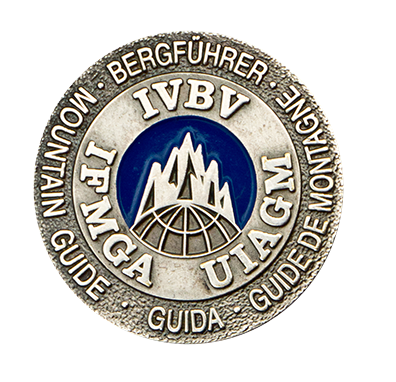The Northern Warfare Training Center is based at Fort Wainwright in Fairbanks. NWTC instructors teach field courses at the Black Rapids training site, in the Alaska Range off the Delta Highway. In early November I joined five NWTC instructors at the Matanuska Glacier for a four-day advanced ice climbing course. Since they have a solid foundation in ice climbing, our goal was tuning their instruction technique and their tuning their climbing technique. These guys are fun, have tons of experience and are keen to learn.
I first instructed ice climbing on the Mat Glacier in 1999 while preparing for a 12-day trip to the Bagley Icefield. Although the glacier has thinned, the end is much the same as 15 years ago. This year we had perfect conditions: mostly calm, temps in the 20's and no other climbers. Just the mighty Chugach beasts looking down on us.
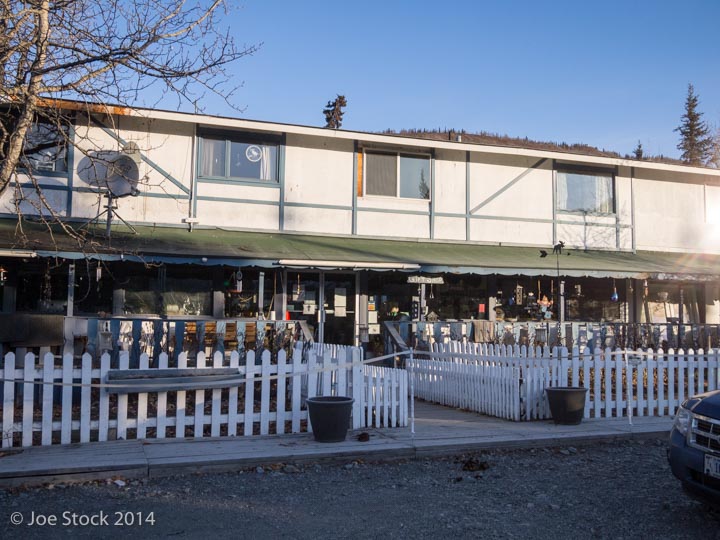
The Matanuska Glacier office hasn't changed in 15 years. Residents pay $15 per person per day to use the private land, while non-residents pay $20. While giving your money to friendly Glacier Bill, you can buy bone carvings and faded slides of flowers. Progress in these parts means buying another greasy D6 Caterpillar and loading the freezer with moose for winter.

We started the course from scratch, which means flat footing. More points in the ice mean increased security.
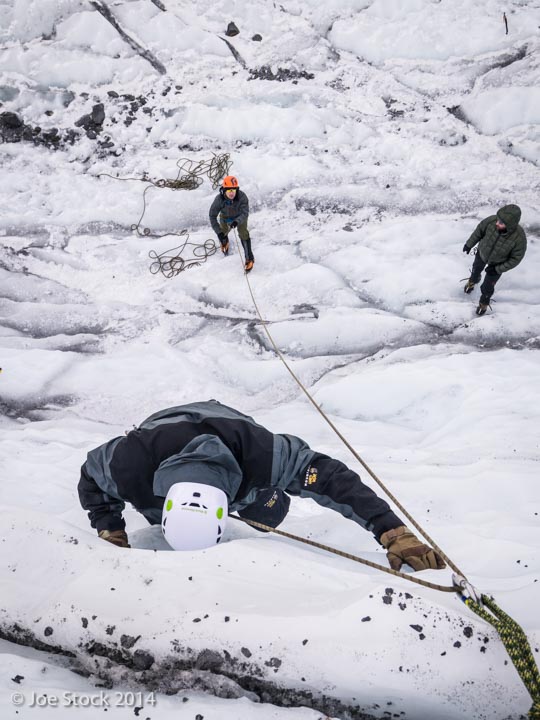
To solidify our footwork we climbed near-vertical ice with no tools. This technique forces the climber to look down and focus on his feet. If you put in implement of destruction in the hands of an Army dude then footwork is forgotten.

Then we climbed with one tool. As he swings his tool, Stephon Flynn is keeping his body balanced on a platform of level and shoulder-width feet.

Spongy glacier ice climbing? Wrong. This ice is cold, old and dense. Tools bounced until we dug holes to hook. Here's Zachary McGee tracking with two tools, one tool above the other. Walking his feet up then forming a tripod for the next swing. Kicking in, in, out, out. Swing. The Matanuska Glacier has ice climbing all year. From Anchorage it's a two hour drive and then a fifteen minute walk to seracs of all difficulty.

We covered ice anchors. I liked their technique of leaving the cordelette ends untied. This makes the height of the master point adjustable, but adds the concern of loose ends and an open system.

Working on transitions from belaying a second to descent by lowering and rappelling.

First Sargent Robert Whiteley lowering a fallen climber using a BD ATC Guide in guide mode. Practicing this technique is essential if using a plaquette-type device in guide mode. The victim is Karl Slingerland, a civilian for the NWTC who is developing a High Angle Snow and Ice Mobility Course.

On the fourth day we put all the skills together. Each student lead a pitch, belayed two climbers up at the same time, lowered each second and then rappelled from an Abalakov thread. Here's Whiteley on lead, bashing up 1,000-year old ice.
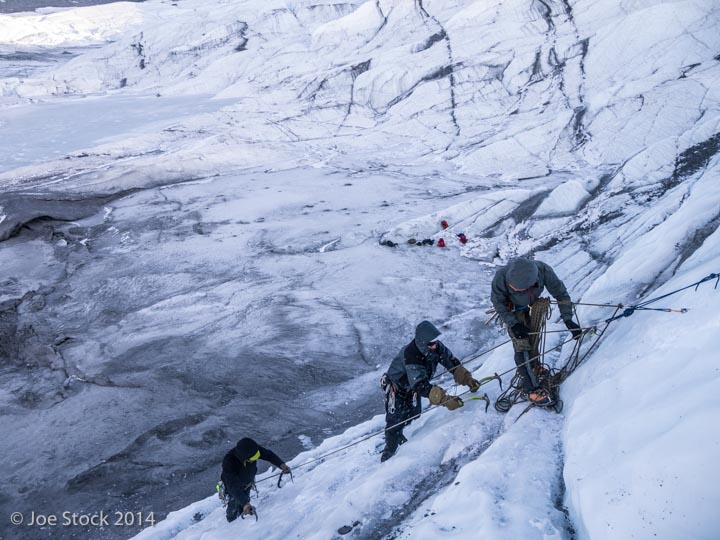
Stephon Flynn belaying Seth Toy and Zachary McGee.
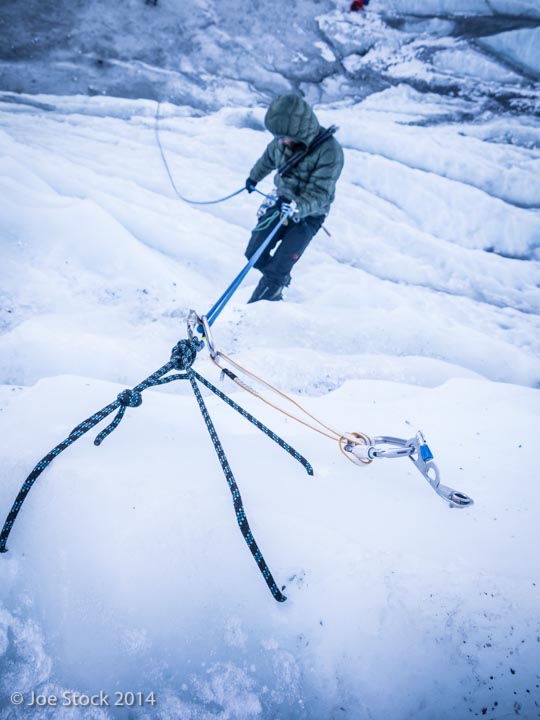
Slingerland rapping from equalized Abalakov threads backed up with a screw. Rappelling is one of the most dangerous parts of climbing. We minimize the risk with backups and checks. Slingerland's device is on an extension and backed up with an autoblock.
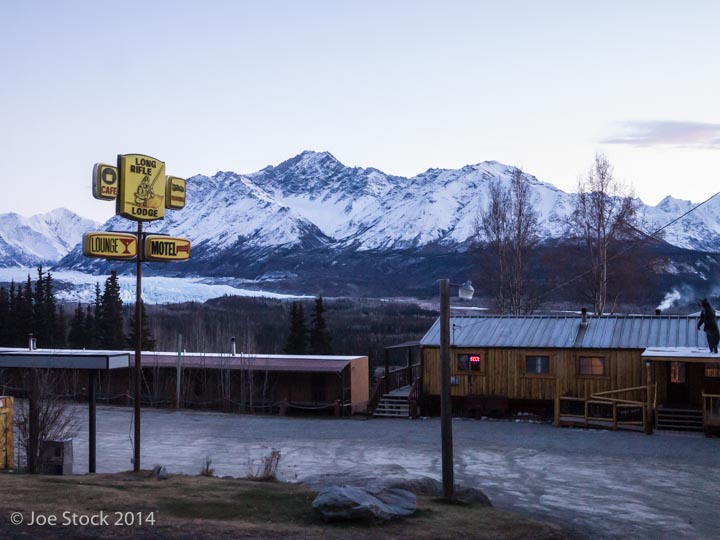
We stayed at the Long Rifle Lodge in a dry cabin with an outhouse. The NWTC guys where horrified at the southern-style outhouse with a regular toilet seat. In Fairbanks, where the NWTC guys live, regular toilet seats are dangerous. Freezing your buttocks on a -60-degree seat is a real concern. Two-inch Bluefoam is the preferred toilet seat in Fairbanks.

Dining at the Long Rifle Lodge with moose, brown bear, black bear, wolf, wolverine, grouse, ptarmigan, musk ox, squirrel.... Thanks a for a great trip guys!
